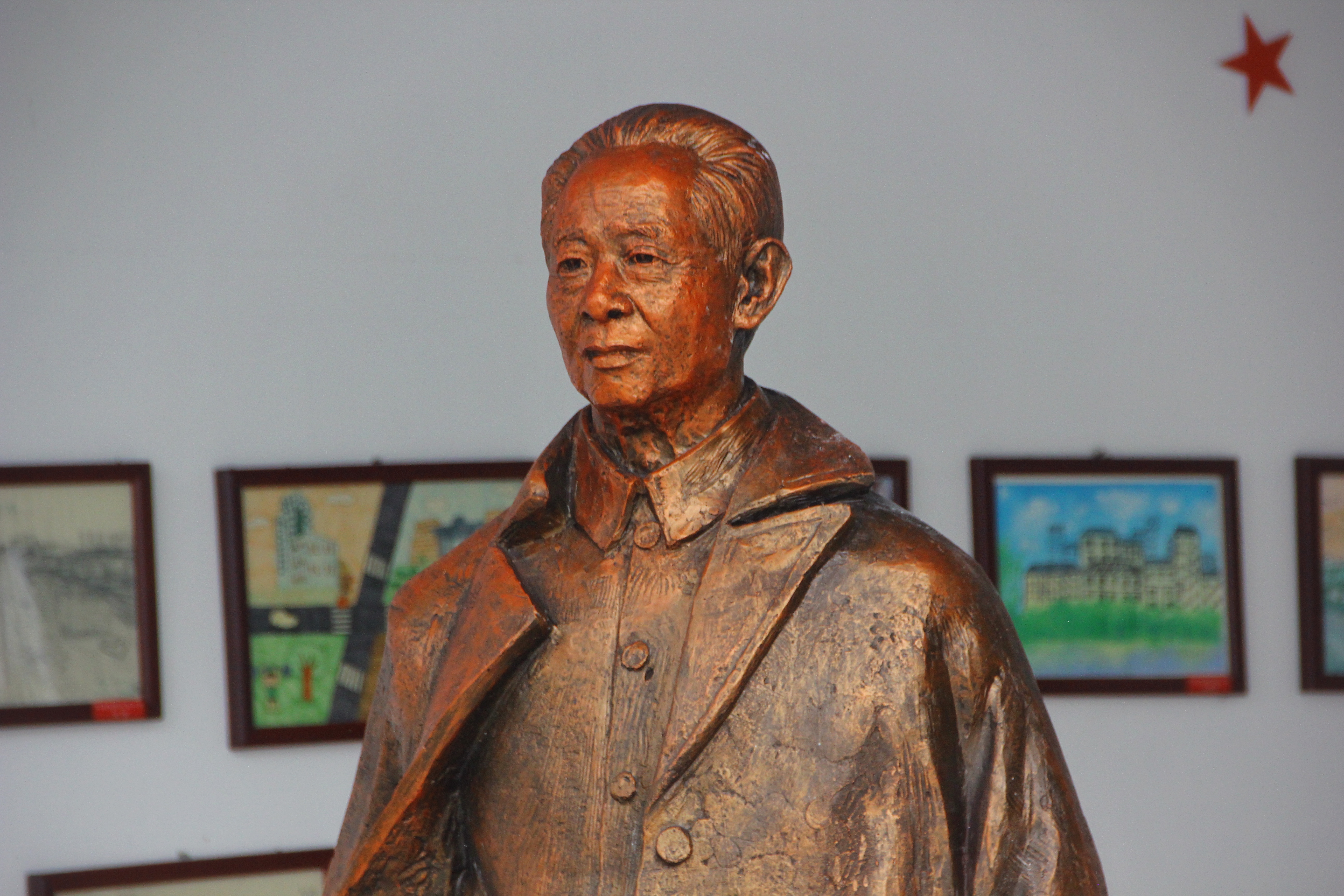|
Sino-Canadian Dinosaur Project
The China-Canada Dinosaur Project (Chinese: 中国-加拿大恐龙计划; Pinyin: ''Zhōngguó-jiānádà kǒnglóng jìhuà''; also known as ''Sino-Canadian Dinosaur Project'') was a six-year series of palaeontological expeditions carried out by scientists from China and Canada. History Background In the 19th and early-20th centuries, foreign and domestic researchers, including Roy Chapman Andrews and Yang Zhongjian, made many dinosaur-related discoveries in China and Mongolia, particularly in the Gobi Desert. This changed with the rise of the Chinese Communist Party and establishment of the People's Republic of China in 1949, which saw Chinese academia reorganized and some fields, including anthropology, fall out of favour over their perceived ties to imperialism. The Institute of Vertebrate Paleontology and Paleoanthropology (IVPP) in Beijing had many of its students reassigned onto other projects, such as the Down to the Countryside Movement, but began to rebuild in the mid-1 ... [...More Info...] [...Related Items...] OR: [Wikipedia] [Google] [Baidu] |
Canadian Museum Of Nature
The Canadian Museum of Nature (; CMN) is a national museums of Canada, national natural history museum based in Canada's National Capital Region (Canada), National Capital Region. The museum's exhibitions and public programs are housed in the Victoria Memorial Museum Building, a in Ottawa, Ontario. The museum's administrative offices and scientific centres are housed at a separate location, the Natural Heritage Campus, in Gatineau, Quebec. The museum originated from a museum established by the Geological Survey of Canada in 1856. Initially based in Montreal, the museum relocated to downtown Ottawa in 1881. In 1911, the museum relocated to the Victoria Memorial Museum Building. Initially, a natural history museum, the institution later expanded to include an anthropology and human history department; with the institution renamed the National Museum of Canada in 1927. The departments of the national museum were later split into separate national institutions, with the natural hist ... [...More Info...] [...Related Items...] OR: [Wikipedia] [Google] [Baidu] |
Beijing
Beijing, Chinese postal romanization, previously romanized as Peking, is the capital city of China. With more than 22 million residents, it is the world's List of national capitals by population, most populous national capital city as well as China's List of cities in China by population, second largest city by urban area after Shanghai. It is located in North China, Northern China, and is governed as a Direct-administered municipalities of China, municipality under the direct administration of the Government of the People's Republic of China, State Council with List of administrative divisions of Beijing, 16 urban, suburban, and rural districts.Figures based on 2006 statistics published in 2007 National Statistical Yearbook of China and available online at archive. Retrieved 21 April 2009. Beijing is mostly surrounded by Hebei Province and neighbors Tianjin to the southeast; together, the three divisions form the Jing-Jin-Ji, Jing-Jin-Ji cluster. Beijing is a global city and ... [...More Info...] [...Related Items...] OR: [Wikipedia] [Google] [Baidu] |
Kevin Taft
Kevin Taft (born 9 September 1955) is an author, consultant, speaker, and former provincial politician in Alberta, Canada. Prior to his election, he worked in various public policy roles (1973–2000) in the Government of Alberta, private and non-profit sectors, in the areas of health, energy, and economic policy. From 1986 to 1991 he was CEO of the ExTerra Foundation, which conducted paleontological expeditions in China's Gobi Desert, Alberta's badlands, and the Canadian Arctic. He is the author of five books as well as several research studies and articles on political and economic issues in Alberta. In the mid-late 1990s Dr. Taft wrote two books critical of the ruling Progressive Conservatives. The Premier of Alberta at the time (Ralph Klein) insulted Taft in the Alberta Legislature, which solidified Taft's desire to run for office to defend his perspective on public policy. He was an Alberta Liberal member of the Legislative Assembly of Alberta from 2001 to 2012, and Lea ... [...More Info...] [...Related Items...] OR: [Wikipedia] [Google] [Baidu] |
Nonprofit Organization
A nonprofit organization (NPO), also known as a nonbusiness entity, nonprofit institution, not-for-profit organization, or simply a nonprofit, is a non-governmental (private) legal entity organized and operated for a collective, public, or social benefit, as opposed to an entity that operates as a business aiming to generate a Profit (accounting), profit for its owners. A nonprofit organization is subject to the non-distribution constraint: any revenues that exceed expenses must be committed to the organization's purpose, not taken by private parties. Depending on the local laws, charities are regularly organized as non-profits. A host of organizations may be non-profit, including some political organizations, schools, hospitals, business associations, churches, foundations, social clubs, and consumer cooperatives. Nonprofit entities may seek approval from governments to be Tax exemption, tax-exempt, and some may also qualify to receive tax-deductible contributions, but an enti ... [...More Info...] [...Related Items...] OR: [Wikipedia] [Google] [Baidu] |
Edmonton
Edmonton is the capital city of the Provinces and territories of Canada, Canadian province of Alberta. It is situated on the North Saskatchewan River and is the centre of the Edmonton Metropolitan Region, which is surrounded by Central Alberta, Alberta's central region, and is in Treaty 6, Treaty 6 territory. It anchors the northern end of what Statistics Canada defines as the "Calgary–Edmonton Corridor". The area that later became the city of Edmonton was first inhabited by First Nations in Alberta, First Nations peoples and was also a historic site for the Métis in Alberta, Métis. By 1795, many trading posts had been established around the area that later became the Edmonton census metropolitan area. "Fort Edmonton", as it was known, became the main centre for trade in the area after the 1821 merger of the Hudson's Bay Company and the North West Company. It remained sparsely populated until the Canadian acquisition of Rupert's Land in 1870, followed eventually by the arri ... [...More Info...] [...Related Items...] OR: [Wikipedia] [Google] [Baidu] |
Canada Council
The Canada Council for the Arts (), commonly called the Canada Council, is a Crown corporations of Canada, Crown corporation established in 1957 as an arts council of the Government of Canada. It is Canada's public arts funder, with a mandate to foster and promote the study and enjoyment of, and the production of works in, the arts. The Council's grants, services, initiatives, prizes and payments contribute to the vibrancy of a creative and diverse arts and literary scene and support its presence across Canada and abroad. The Council's investments contribute to fostering greater engagement in the arts among Canadians and international audiences. In addition, the Canada Council administers the Art Bank, which operates art rental programs and an exhibitions and outreach program. The Canada Council Art Bank holds the largest collection of contemporary Canadian art in the world. The Canada Council is also responsible for the secretariat for the Canadian Commission for UNESCO and the ... [...More Info...] [...Related Items...] OR: [Wikipedia] [Google] [Baidu] |
Canadian Dollar
The Canadian dollar (currency symbol, symbol: $; ISO 4217, code: CAD; ) is the currency of Canada. It is abbreviated with the dollar sign $. There is no standard disambiguating form, but the abbreviations Can$, CA$ and C$ are frequently used for distinction from other dollar-denominated currencies (though C$ remains ambiguous with the Nicaraguan córdoba). It is divided into 100 cent (currency), cents (¢). Owing to the image of a common loon on its reverse, the dollar coin, and sometimes the unit of currency itself, may be metonymy, referred to as the ''loonie'' by English-speaking Canadians and foreign exchange traders and analysts. Accounting for approximately two per cent of all global reserves, the Canadian dollar is the fifth-most held reserve currency in the world, behind the United States dollar, US dollar, euro, Japanese yen, yen, and pound sterling, sterling. The Canadian dollar is popular with central banks because of Canada's relative economic soundness, the ... [...More Info...] [...Related Items...] OR: [Wikipedia] [Google] [Baidu] |
Brian Noble (scientist) (born 1961), English rugby league player and coach
{{hndis, name=Noble, Brian ...
Brian Noble may refer to: * Brian Noble (bishop) (1936–2019), British Roman Catholic bishop * Brian Noble (American football) (born 1962), American football player *Brian Noble (rugby league) Brian David Noble Order of the British Empire, MBE (born 14 February 1961), also known by the nickname of "Nobby", is an English rugby league coach and former rugby league footballer. He is the current head-coach of Bradford Bulls. As a footba ... [...More Info...] [...Related Items...] OR: [Wikipedia] [Google] [Baidu] |
Philip J
Philip, also Phillip, is a male name derived from the Greek (''Philippos'', lit. "horse-loving" or "fond of horses"), from a compound of (''philos'', "dear", "loved", "loving") and (''hippos'', "horse"). Prominent Philips who popularized the name include kings of Macedonia and one of the apostles of early Christianity. ''Philip'' has many alternative spellings. One derivation often used as a surname is Phillips. The original Greek spelling includes two Ps as seen in Philippides and Philippos, which is possible due to the Greek endings following the two Ps. To end a word with such a double consonant—in Greek or in English—would, however, be incorrect. It has many diminutive (or even hypocoristic) forms including Phil, Philly, Phillie, Lip, and Pip. There are also feminine forms such as Philippine and Philippa. Philip in other languages * Afrikaans: Filip * Albanian: Filip * Amharic: ፊሊጶስ (Filip'os) * Arabic: فيلبس (Fīlibus), فيليبوس ( ... [...More Info...] [...Related Items...] OR: [Wikipedia] [Google] [Baidu] |
Royal Alberta Museum
The Royal Alberta Museum (RAM) is a museum of human and natural history in Downtown Edmonton, Alberta, Canada, located north of City Hall. The museum is the largest in western Canada with more than exhibition space and in total. The museum was established by the Government of Alberta in December 1967 as the Provincial Museum of Alberta. The museum received royal patronage from Queen Elizabeth II, and was renamed the Royal Alberta Museum in 2005. In 2011, plans were announced to move the museum to a new building. The museums continued to operate from its original building in Glenora, Edmonton until it was closed to the public in December 2015. Although the museum was closed to the public, a number of its departments continued to operate, either preparing the museum's collection for the move, or conducting fieldwork. The new building was completed in August 2016, and was opened to the public in October 2018. The museum features expansive galleries chronicling Alberta's natural ... [...More Info...] [...Related Items...] OR: [Wikipedia] [Google] [Baidu] |
Chinese Economic Reform
Reform and opening-up ( zh, s=改革开放, p=Gǎigé kāifàng), also known as the Chinese economic reform or Chinese economic miracle, refers to a variety of economic reforms termed socialism with Chinese characteristics and socialist market economy in the People's Republic of China (PRC) that began in the late 20th century, after Mao Zedong's death in 1976. Guided by Deng Xiaoping, who is often credited as the "General Architect", the reforms were launched by reformists within the ruling Chinese Communist Party (CCP) on December 18, 1978, during the '' Boluan Fanzheng'' period. A parallel set of political reforms were launched by Deng and his allies in the 1980s, but eventually ended in 1989 due to the crackdown on the Tiananmen Square protests, halting further political liberalization. The economic reforms were revived after Deng Xiaoping's southern tour in 1992. The reforms led to significant economic growth for China within the successive decades; this phenomenon has ... [...More Info...] [...Related Items...] OR: [Wikipedia] [Google] [Baidu] |







